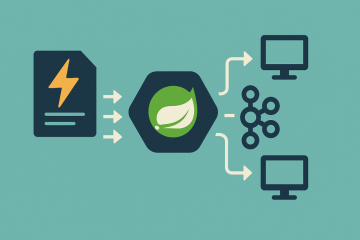Introduction
Java applications are widely used in enterprises due to their robustness, scalability, and extensive ecosystem. However, when deployed in cloud environments, they can incur significant costs if not optimized properly. Understanding how to manage and reduce cloud spending is essential for businesses looking to improve ROI without sacrificing performance.
This blog explores proven strategies to reduce cloud costs for Java applications while maintaining high performance and reliability.
1. Right-Size Your Infrastructure
One of the most common causes of cloud overspending is over-provisioning. Ensure that your compute instances (EC2, GCE, or Azure VMs) are appropriately sized based on actual workloads.
Tips:
- Use performance monitoring tools like AWS CloudWatch, Azure Monitor, or Prometheus to analyze CPU, memory, and I/O usage.
- Choose burstable instance types (e.g., t3.micro) for low-usage applications.
- Regularly review and downgrade overprovisioned instances.
2. Use Auto-Scaling
Java applications often experience variable workloads. Auto-scaling ensures that you only pay for the resources you use.
Implementation:
- Set up horizontal auto-scaling groups based on metrics like CPU usage or request count.
- Use container orchestration tools like Kubernetes or ECS with HPA (Horizontal Pod Autoscaler).
3. Opt for Serverless Where Possible
Serverless computing can offer huge cost savings for workloads that are event-driven or have sporadic traffic.
Example:
Use AWS Lambda or Azure Functions to run scheduled tasks, file processing, or lightweight APIs instead of keeping always-on VMs.
4. Optimize JVM Performance
A well-tuned Java Virtual Machine (JVM) can significantly reduce resource consumption.
Best Practices:
- Adjust JVM heap size (
-Xmx,-Xms) based on application behavior. - Use G1GC (Garbage First Garbage Collector) for predictable GC performance.
- Monitor garbage collection metrics and fine-tune as needed.
5. Embrace Containers and Microservices
Migrating monolithic applications to microservices or containerized architectures can enhance scalability and resource utilization.
Tools:
- Use Docker to containerize Java applications.
- Deploy using Kubernetes or AWS ECS/Fargate for efficient resource scheduling.
6. Use Spot and Reserved Instances
Cloud providers offer cost-effective pricing options:
- Reserved Instances (RIs): Long-term commitment, lower cost.
- Spot Instances: Up to 90% cheaper, suitable for fault-tolerant, batch processing tasks.
7. Monitor and Set Budgets
Implement cost governance:
- Use AWS Budgets, Azure Cost Management, or GCP Cloud Billing.
- Set alerts and budget thresholds.
- Track unused resources (idle VMs, unattached volumes) and terminate them.
8. Use Managed Services Wisely
Evaluate the cost of using managed services versus self-hosted:
- Managed services save operational overhead but may be costlier for high throughput.
- Example: RDS vs. self-managed MySQL on EC2.
Conclusion
Reducing cloud costs for Java applications is not a one-time effort but an ongoing process. By implementing right-sizing, optimizing JVMs, adopting containers or serverless, and enforcing monitoring, organizations can significantly cut expenses while delivering high-quality services.
Cost optimization in the cloud is about smart architecture decisions and continuous performance tuning.



0 Comments